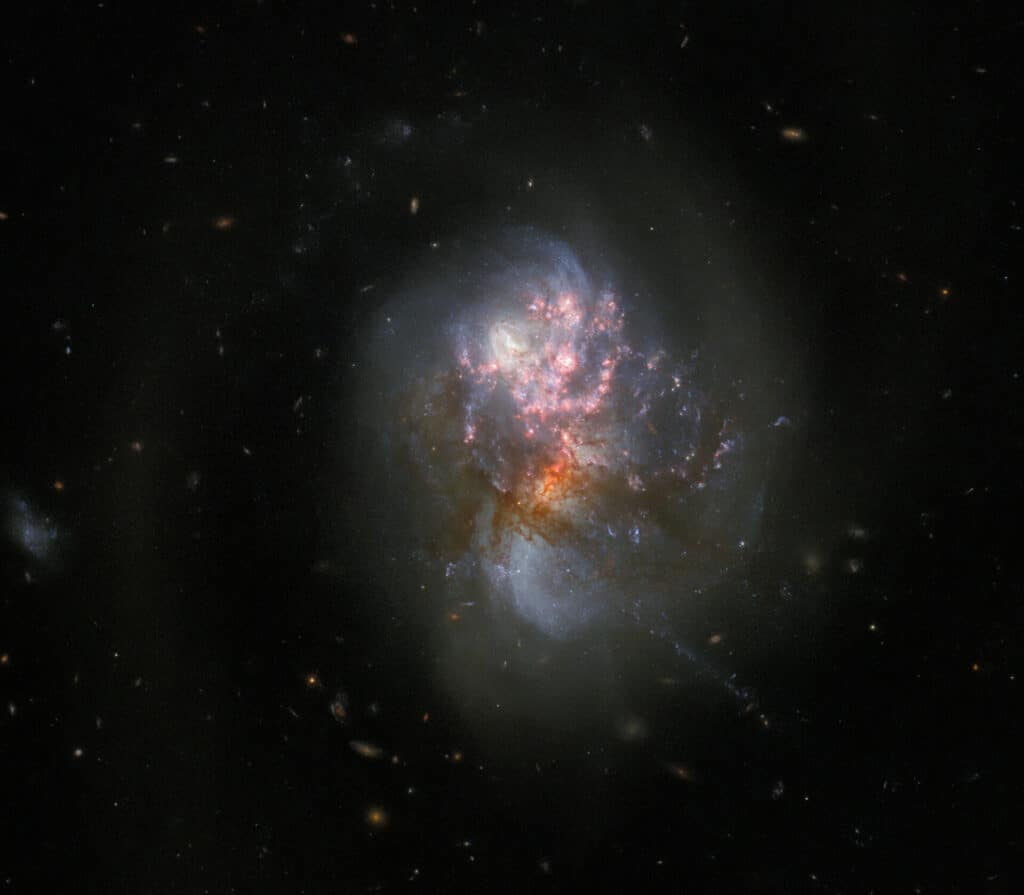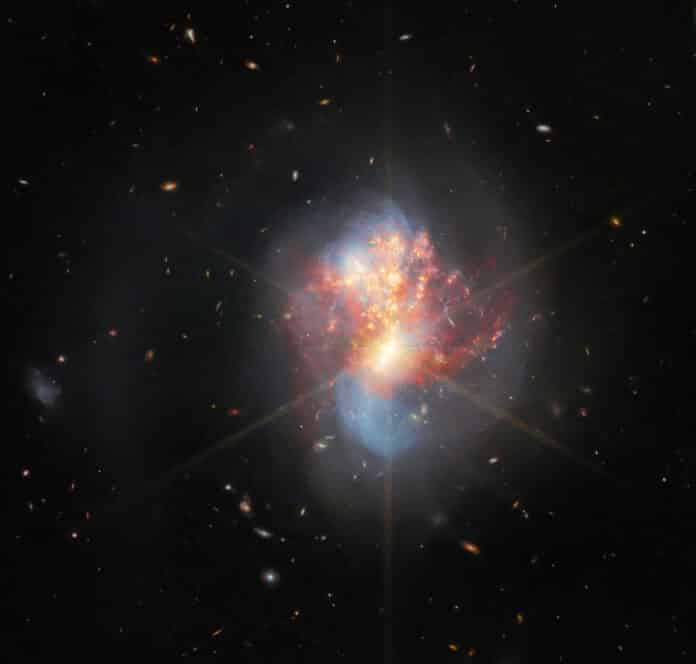Webb explores an exceptionally bright, interacting galaxy system that lies around 270 million light-years from Earth in the constellation Cetus. Here, the merging galaxies IC 1623 A and B from the Webb Picture of the Month are seen next to a brand-new photograph taken by the NASA/ESA Hubble Space Telescope. Using data from Hubble’s ACS and WFC3 sensors, the image on the right provides a well-known visible-light perspective of two colliding galaxies.
The centers of the individual galaxies are much more obscured by dark dust. Meanwhile, in Webb’s combined MIRI and NIRCam view of the galaxies on the left, the gas used as fuel by the stellar nurseries is especially apparent.
A galaxy merger is a term for what is happening to the two galaxies in IC 1623 as they crash into one another. A starburst caused by their collision has produced stars at a rate that is more than twenty times faster than that of the Milky Way galaxy.
The ability of Webb to investigate luminous galaxies is tested in this system of interacting galaxies because it is exceptionally bright at infrared wavelengths. Using a trio of Webb’s state-of-the-art scientific equipment, MIRI, NIRSpec, and NIRCam, an astronomical team captured IC 1623 across the infrared portions of the electromagnetic spectrum.

By doing this, they produced a wealth of information that will enable the astronomical community to thoroughly study how Webb’s ground-breaking capabilities will aid in deciphering the intricate relationships in galactic ecosystems. These observations will serve as a foundation for future observations of galactic systems with Webb. They are also supported by data from other observatories, including the NASA/ESA Hubble Space Telescope.
Astronomers have long been interested in merging these two galaxies, and Hubble and other space telescopes have already captured images of it. The merging galaxies may very likely be in the process of generating a supermassive black hole, and the continuous, violent starburst is causing tremendous infrared emission. These important discoveries have been hidden from a thick band of dust by telescopes like Hubble. The stunning image above was created by combining MIRI and NIRCam data, but Webb’s infrared sensitivity and resolution at those wavelengths allow it to see past the dust.
